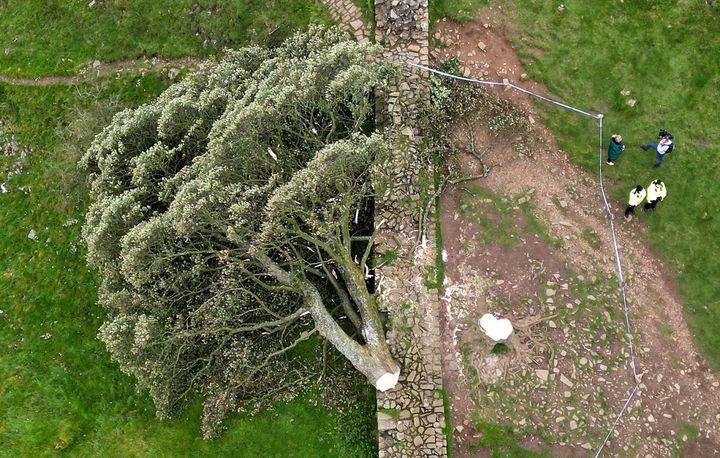The National Trust has warned that an iconic English tree is already struggling due to climate change.
Yes, the English oak, which pops up repeatedly throughout our national history, is said to support more life than any other native tree species in the UK and creates one of the hardest timbers on the planet, is under strain due to our shifting climate.
Advertisement
In fact, climate change is exacerbating a phenomenon already known as acute oat decline, caused by a non-native pest.
The oak processionary moth damages the tree’s foliage and increases its susceptibility to other diseases – and climate change means the pest is sticking around for much longer these days, due to shorter winters.
John Deakin, head of trees and woodland at the National Trust “cold snaps [are] just not long enough to kill off diseases such as oak processionary moth, whose caterpillars infest oak trees, leaving them vulnerable to other threats.”
And the moth’s spread northwards through Europe away from their traditional home in the Mediterranean “is a tangible consequence of our warming climate,” Deakin added.
Advertisement
Deakin explained that growing any new trees – not just oak – is especially difficult in periods of drought, too, with up to 80% of saplings dying in some areas of the country.
While experts have devised techniques using wood mulching and sheep fleeces to help keep moisture in the soil and prevent grass growth, they are now looking at how trees will need different environments in the next 50 years.
For instance, beech trees and woodlands – typically found in the south – may soon only suit the north of England.
Deakin explained: “Our traditional thinking of where certain species like English oak and Sessile oak may thrive geographically is also likely to change as we are already seeing the huge impact of Acute Oak Decline on English oak in the south east and midlands, previously their stronghold, now being compromised.”
Ben McCarthy, head of the Trust’s nature and restoration ecology, also noted that shifting weather patterns in the UK mean many trees were constantly under stress.
Advertisement
Sometimes they can end up producing too much berries and nuts, without the chance to “rest”.
And while these are “incremental shifts”, these changes build up over a decade to cause serious changes in our wildlife.
McCarthy said: “It’s these baseline changes that we’re seeing that are really worrying and what we should be taking more notice of, particularly when combined with extreme weather events, which makes things even more challenging.”
Meanwhile, the national climate change consultant at the Trust, Keith Jones, said the UK must not be “lulled into any sense of false security” when it comes to our weather.
“We are likely to experience a combination of drought and high temperatures as well as high rainfall and floods – and we need to get ready for this new ‘norm’,” Jones explained.





